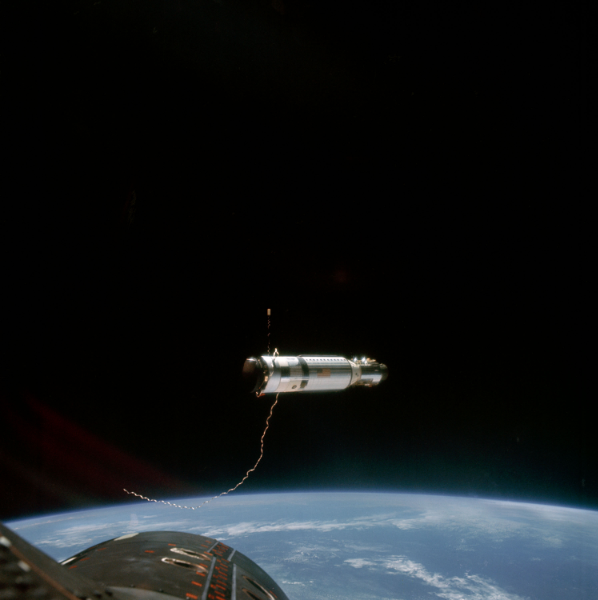Space missions are among the most complex and expensive ventures humans undertake. Whether it’s a robotic rover heading to Mars or a satellite launch into Earth’s orbit, each mission requires precise planning, advanced technology, and strategic resource management. As space exploration expands through both government agencies like NASA and private companies, the demand for efficient space missions is higher than ever.
In this blog, we’ll explore practical and innovative ways to improve the efficiency of space missions, making them faster, safer, more cost-effective, and sustainable for the future of US and UK space exploration and beyond.
Why Efficiency in Space Missions Matters

Making space missions more efficient is not just about saving money, though that's a major factor. Efficiency also impacts:
- Mission success rates
- Launch timelines
- Safety of astronauts
- Environmental impact
- Scientific output per dollar spent
With limited resources and growing ambitions in the space industry, mission planners must adopt smarter tools, processes, and designs to stretch every dollar and every launch opportunity.
Using Reusable Launch Systems

Traditionally, rockets were used once and discarded. But today, companies like SpaceX and Blue Origin have revolutionized the industry by designing reusable launch vehicles. Reusability cuts costs dramatically and allows for quicker turnarounds between launches.
- Example: SpaceX’s Falcon 9 rocket has been reused dozens of times, reducing the cost per launch.
- Impact: Faster and cheaper access to space for governments, researchers, and private companies.
Investing in Autonomous Systems
Automation and AI can handle complex tasks during space missions, from navigation to maintenance. This reduces the burden on astronauts and ground control and increases reliability. Adopting smart systems is a way to improve space missions and reduce human error.
- Robotic assistants, like NASA’s Astrobee on the ISS, help monitor systems and manage tasks.
- Autonomous rovers, like Perseverance on Mars, can drive, analyze, and make decisions with minimal input from Earth.
Miniaturization of Technology
Today’s satellites and probes are much smaller than in the past. The rise of CubeSats and Nanosatellites makes it possible to launch multiple tools in one mission.
- Benefits: Lower weight means less fuel, and smaller payloads reduce launch costs.
- Efficiency: Multiple small satellites can be launched together to perform tasks in sync, improving data collection.
This trend supports cost-effective research, communication, and Earth observation projects.
Improving Propulsion Systems
A key focus in making missions more efficient is using better propulsion technologies. Traditional chemical rockets are powerful but have heavy fuel. New alternatives are being developed, such as:
- Ion propulsion: uses electric fields to accelerate ions, offering long-term fuel efficiency.
- Solar sails: Use radiation pressure from sunlight to move spacecraft, ideal for deep-space missions.
- Nuclear thermal propulsion: In development stages, this could provide faster interplanetary travel.
These technologies allow spacecraft to travel farther with less fuel, making missions longer and more productive.
Efficient Mission Planning with Simulation
Advanced computer simulations now allow engineers to model every aspect of a mission before launch. This includes trajectory planning, system failures, and environmental factors.
- Example: NASA uses digital twins to create virtual versions of spacecraft to test ideas before launch.
- Benefit: Reduces last-minute design changes and costly surprises, increasing mission success rates.
Simulation also aids in planning multi-stage missions with more accuracy and speed.
Resource Recycling in Space

Efficiency isn't just for launch; it matters in space, too. Long-term missions, such as those on the ISS or to Mars, require sustainable systems.
- Water recycling: Systems on the ISS can recycle over 90% of the water used by astronauts.
- Air filtration: Removes CO₂ and recycles oxygen, reducing the need for constant resupply.
- 3D printing in space: Tools and parts can be printed on demand, reducing cargo loads.
This approach helps missions last longer without frequent support from Earth.
Modular Spacecraft and Infrastructure
Designing modular systems makes space exploration more flexible and cost-efficient. Modules can be reused, replaced, or added over time.
- Example: The ISS is a modular structure built over several years.
- Upcoming: NASA’s Gateway station for lunar missions will use a modular design for efficiency and upgrades.
This idea extends to landers, habitats, and rovers, especially in the Moon and Mars exploration projects.
Collaborating with International and Private Partners
Global partnerships and commercial partnerships reduce the burden on individual space agencies. Instead of duplicating efforts, agencies can share knowledge, infrastructure, and even launch vehicles.
- NASA collaborates with ESA (European Space Agency), JAXA (Japan), and private companies.
- The UK space industry is actively working with US and European firms to boost efficiency.
This collaborative approach promotes innovation, reduces costs, and increases mission reach.
Satellite Swarms and Constellations
Instead of one large satellite, agencies now launch swarms or constellations of smaller satellites working together.
- Example: SpaceX’s Starlink uses thousands of satellites for the global internet.
- Efficiency: If one unit fails, others can take over, reducing space missions risk.
These swarms are efficient, scalable, and cost-effective for communication, navigation, and Earth observation.
Public Access and Open Data
Open access to space data and technologies fuels innovation. When agencies share mission data publicly, private companies, universities, and individuals can use it to develop new tools and research.
- Example: NASA’s open-source data portals offer satellite images, Mars rover findings, and climate data.
- Result: Lower entry barriers and faster innovation across the space industry.
This supports the rise of new startups and efficient mission solutions worldwide.
Conclusion
Making space missions more efficient is not just a technical challenge; it's a strategic necessity. As space agencies and private companies aim for deeper space exploration, reducing costs, increasing reliability, and promoting sustainability will be defined as success.
By embracing reusability, automation, smarter planning, and international collaboration, the future of space travel becomes more achievable and impactful. Whether you're a policymaker, engineer, or investor looking to invest in space mission tech, these top ideas point toward a smarter way forward. In short, efficient missions mean more science, more access, and a better return on investment, bringing the stars just a little closer to home.








